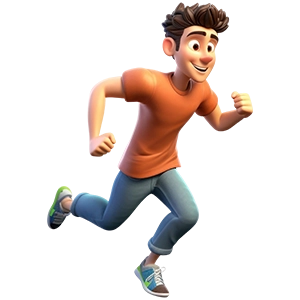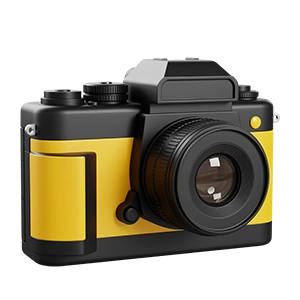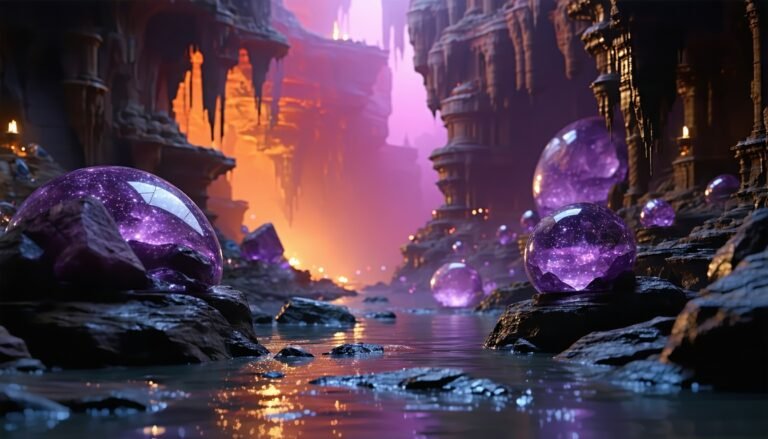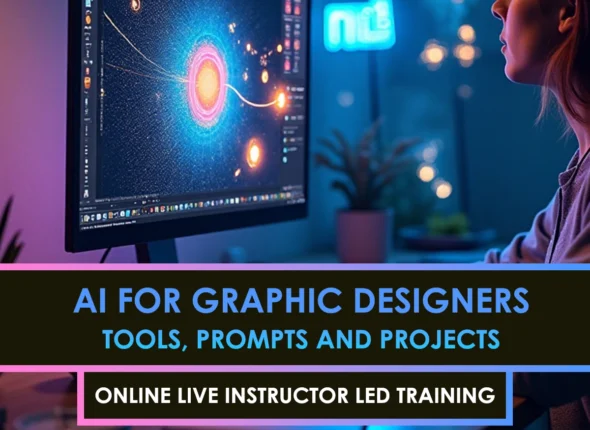Whether you’re just dipping your toe into stereoscopic animation or you’ve been wrangling 3D renders for a while, exploring VFX for 3D movies is a game-changer for filmmaking. And yeah, I get it. Sometimes it can feel like you’re juggling multiple worlds at once. But take a breath, because this guide will walk you through all the essentials. Grab that coffee (or energy drink of choice), and let’s dive in.
Lay your 3D foundation.
Before you venture into complex stereo shots, you need a solid base. That means understanding what 3D depth involves. Essentially, you’re adding another dimension to your visuals, creating the illusion that characters and objects live in real-world space.
- Spacing matters: If your objects are too close or too far, you risk either flattening out the scene or straining your audience’s eyes.
- Learn basic geometry: Even fundamental 3D geometry can help you position elements accurately.
- Use references: Studying actual physical models often sparks fresh ideas about how to layer your shots.
Whenever you’re ready to explore deeper aspects of 3D illusions, consider checking out 3d depth creation techniques. It’s an excellent resource to see where your stereoscopic exploration can take you.
Set up your stereoscopic workflow.
Your stereoscopic workflow typically starts with setting up two slightly offset cameras. That offset mimics how your eyes see the world from two vantage points, merging into a single 3D image in post.
- Choose your camera rig carefully: Whether you’re using physical rigs or virtual ones, consistency is key.
- Keep track of interaxial distance: This is the distance between those two cameras, which directly impacts depth intensity.
- Maintain a clean pipeline: From capture through post-production, label your files clearly and maintain a logical folder structure to ensure a transparent workflow.
You can also expand your understanding with stereoscopic effects in movies, which offer insights into how professionals handle parallel or convergent camera setups.
Develop advanced depth illusions.
Once you’ve nailed the camera offset, it’s time to create more intricate layers. Here’s where you enter the domain of depth mapping, parallax, and multi-pass compositions.
- Depth mapping basics: Try out depth mapping in filmmaking to see how precise depth maps can make foreground elements pop and background layers recede naturally.
- Parallax adjustments: Subtle parallax differences can help your audience get a realistic sense of space. An exaggerated parallax can feel exciting, but too much can break immersion.
- Multi-pass approach: Consider rendering shadows, highlights, and reflections on separate layers to achieve a more refined result. Then, combine them in compositing to maintain total control over each depth cue.
Refine lighting and compositing.
Here’s the not-so-secret sauce: great lighting is essential for making your 3D illusions believable. In short, sloppy or inconsistent lighting can flatten a scene faster than you’d imagine.
- Match your lights: Ensure the direction, color, and intensity of the lights in your 3D render match those in the live-action footage, if available.e
- Identify your color channels: Factor in which color channels might cause ghosting or artifacts in stereo.
- Tweak alpha edges: Hair, fabric, or semi-transparent objects often need extra love during compositing. Fine-tune your alpha channels to maintain a clean appearance.
If you want a deeper dive into combining advanced lighting with precise camera offsets, you might find advanced stereoscopic filmmaking helpful. It showcases practical tips for merging lighting techniques with stereo setups.
Polish your final stereo result.
Once your depth layers and lighting are locked in, it’s time for that finishing pass. This is where small details matter, such as removing minor artifacts or adjusting the color balance for each eye channel.
- Use stereo scopes or preview monitors: A stereoscopic preview can highlight any depth issues before final delivery.
- Fine-tune convergence: Even a slight shift in the convergence point can reduce eye strain and increase viewing comfort.
- Watch for ghosting: Review your footage with multiple viewer settings or devices to ensure that no unexpected shadows or double images appear.
Finally, run through your entire sequence a few times in different lighting conditions. This might sound trivial, but it helps you spot subtle mismatches or color shifts that can ruin an otherwise convincing stereo effect.
Conclusion and next steps
At this point, you’ve laid down a solid stereoscopic foundation, established a workable camera setup, and refined your lighting and compositing. By layering these techniques, you’re set to craft truly immersive depth and realism that hooks your viewers.
If you’re looking for even more nuanced ways to push your boundaries, take a look at the resources mentioned above. Stay curious, experiment with your workflow, and never hesitate to revisit your footage with a fresh eye. The more you probe and refine, the more your 3D illusions will dazzle on screen.
So keep going, keep exploring, and give yourself a big shout-out for tackling an essential skill in today’s visual effects landscape. After all, the future of stereoscopic filmmaking is wide open, and your next big breakthrough might be just a few depth layers away. Happy creating!
FAQS – Frequently Asked Questions
What Is Stereoscopic VFX For 3D Movies?
Stereoscopic VFX for 3D movies refers to creating visual effects that support depth perception by rendering separate images for each eye, enhancing the 3D viewing experience.
How Does Stereoscopic VFX Improve 3D Movies?
Stereoscopic VFX for 3D movies adds depth and realism by accurately aligning left and right eye views, making visual effects appear more immersive and lifelike.
What Technologies Are Used In Stereoscopic VFX For 3D Movies?
Stereoscopic VFX for 3D movies utilizes stereoscopic cameras, depth mapping, parallax adjustments, and specialized software like Nuke and After Effects.
Is Stereoscopic VFX Mandatory For All 3D Movies?
While not mandatory, stereoscopic VFX for 3D movies significantly enhances depth perception and is commonly used in action, sci-fi, and fantasy genres.
What Is The Difference Between Standard VFX And Stereoscopic VFX For 3D Movies?
Standard VFX adds visual elements, while stereoscopic VFX for 3D movies ensures those elements work within a dual-eye 3D space to deliver spatial depth.
How Is Depth Perception Achieved In Stereoscopic VFX For 3D Movies?
Depth perception in stereoscopic VFX for 3D movies is achieved by rendering two slightly different perspectives and using depth maps for accurate spatial placement.
Which Software Supports Stereoscopic VFX For 3D Movies?
Software like Nuke, Maya, Houdini, and After Effects are widely used for creating stereoscopic VFX for 3D movies with advanced stereo toolsets.
Can Stereoscopic VFX Be Applied In Post-Production For 3D Movies?
Yes, stereoscopic VFX for 3D movies can be created or enhanced during post-production through stereo conversion and depth grading processes.
What Is Stereo Rendering In Stereoscopic VFX For 3D Movies?
Stereo rendering in stereoscopic VFX for 3D movies generates separate left-eye and right-eye views for each frame to produce a convincing 3D illusion.
Is Stereoscopic VFX For 3D Movies Used In Animated Films?
Yes, animated films often rely on stereoscopic VFX for 3D movies to create dynamic scenes with immersive depth and camera motion.
What Is Stereo Compositing In Stereoscopic VFX For 3D Movies?
Stereo compositing in stereoscopic VFX for 3D movies involves blending visual layers while preserving accurate depth for both eyes in a 3D format.
Are Special Cameras Needed For Stereoscopic VFX For 3D Movies?
Yes, stereoscopic VFX for 3D movies often begins with stereo rigs or dual-lens cameras to capture the required depth data for VFX integration.
How Are Live-Action And CGI Combined In Stereoscopic VFX For 3D Movies?
Stereoscopic VFX for 3D movies combines live-action and CGI by matching stereo camera angles and integrating CGI elements into the stereo depth pipeline.
Does Stereoscopic VFX For 3D Movies Affect Rendering Time?
Yes, stereoscopic VFX for 3D movies typically doubles rendering time, as each frame requires left and right eye versions for proper depth simulation.
Can Depth Errors Be Corrected In Stereoscopic VFX For 3D Movies?
Yes, depth errors in stereoscopic VFX for 3D movies can be corrected using depth grading, parallax correction, and post-production adjustments.
How Do You Avoid Eye Strain In Stereoscopic VFX For 3D Movies?
Stereoscopic VFX for 3D movies avoids eye strain by maintaining consistent interocular distance, convergence points, and limiting excessive parallax.
What Is The Role Of Parallax In Stereoscopic VFX For 3D Movies?
Parallax is central to stereoscopic VFX for 3D movies as it creates the illusion of depth by shifting object positions between the two eye views.
Can You Convert 2D VFX To Stereoscopic VFX For 3D Movies?
Yes, 2D VFX can be converted to stereoscopic VFX for 3D movies using stereo conversion tools and depth estimation algorithms.
What Are Some Famous Films Using Stereoscopic VFX For 3D Movies?
Famous films like Avatar, Gravity, and How to Train Your Dragon used cutting-edge stereoscopic VFX for 3D movies to create immersive worlds.
Is Stereoscopic VFX For 3D Movies A Good Career Path?
Yes, stereoscopic VFX for 3D movies is a growing career field with demand in film, animation, VR, and game development industries.
Where Can I Learn Stereoscopic VFX For 3D Movies?
You can learn stereoscopic VFX for 3D movies through specialized courses, online training platforms, or VFX institutes offering stereoscopic modules.













